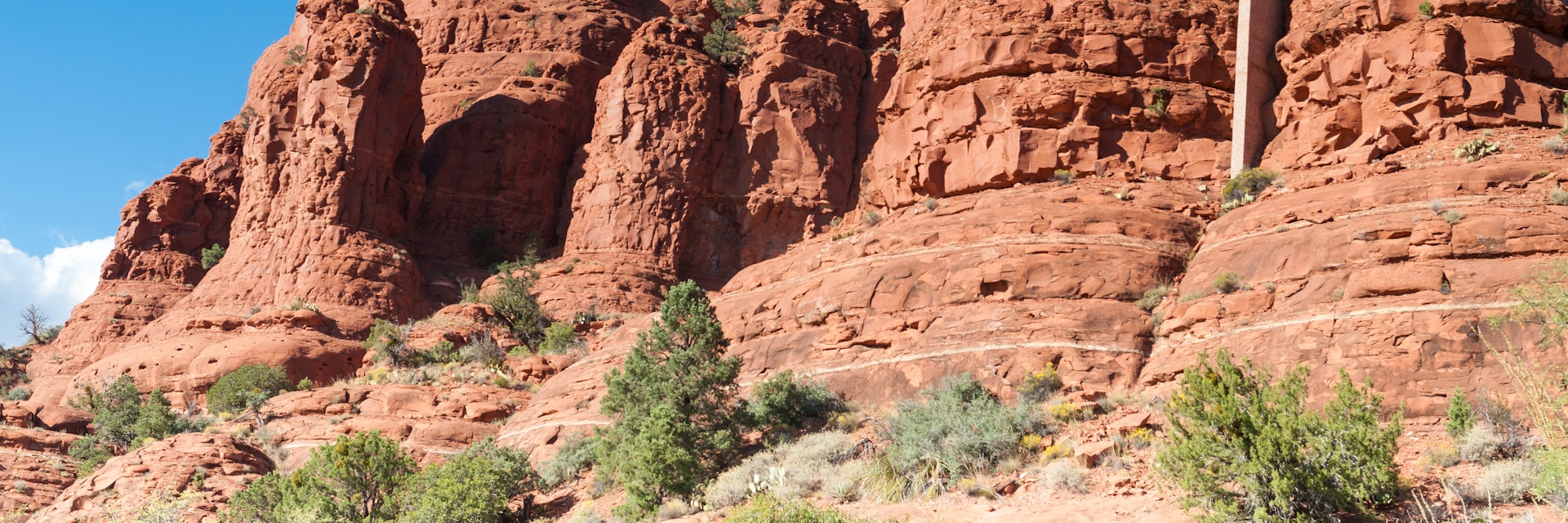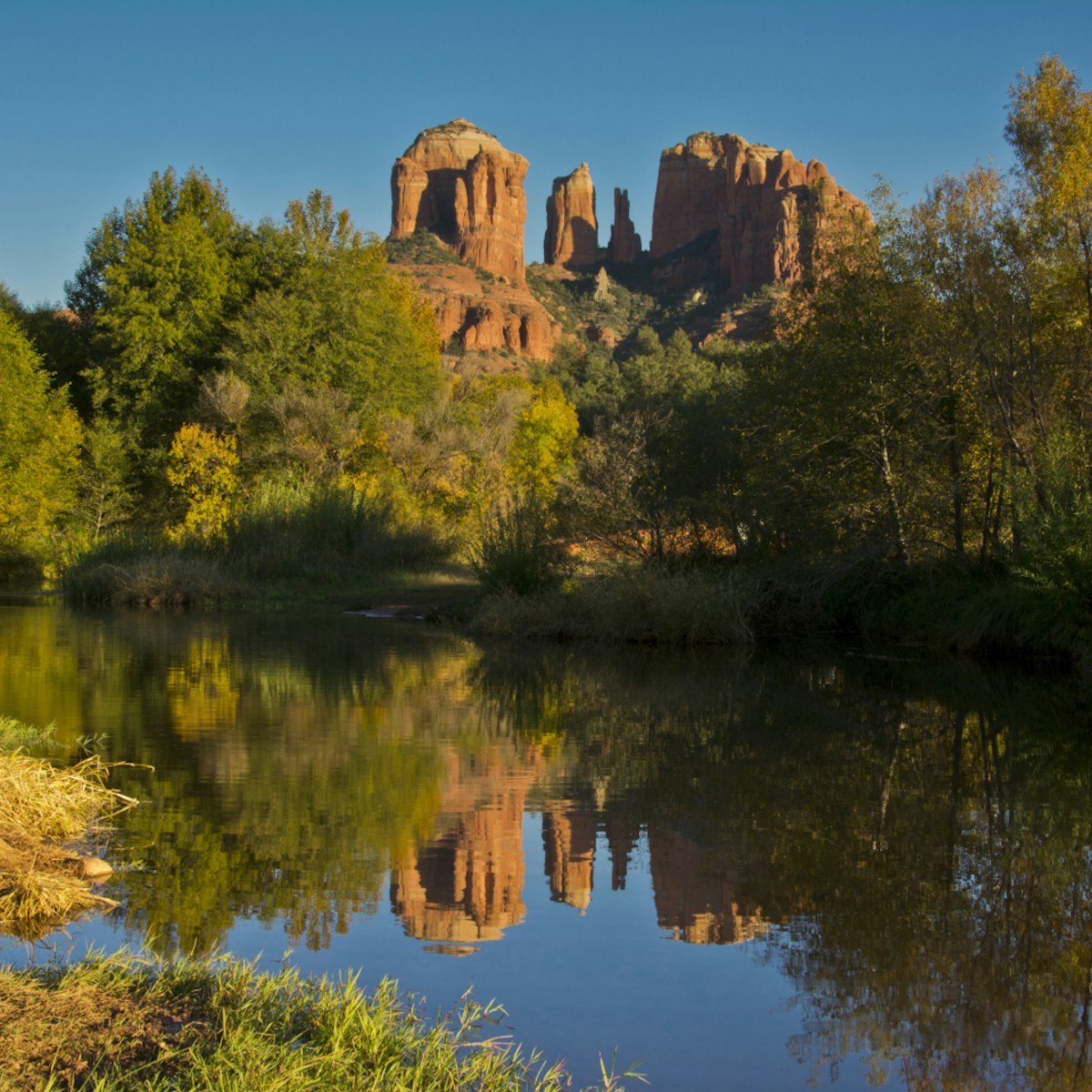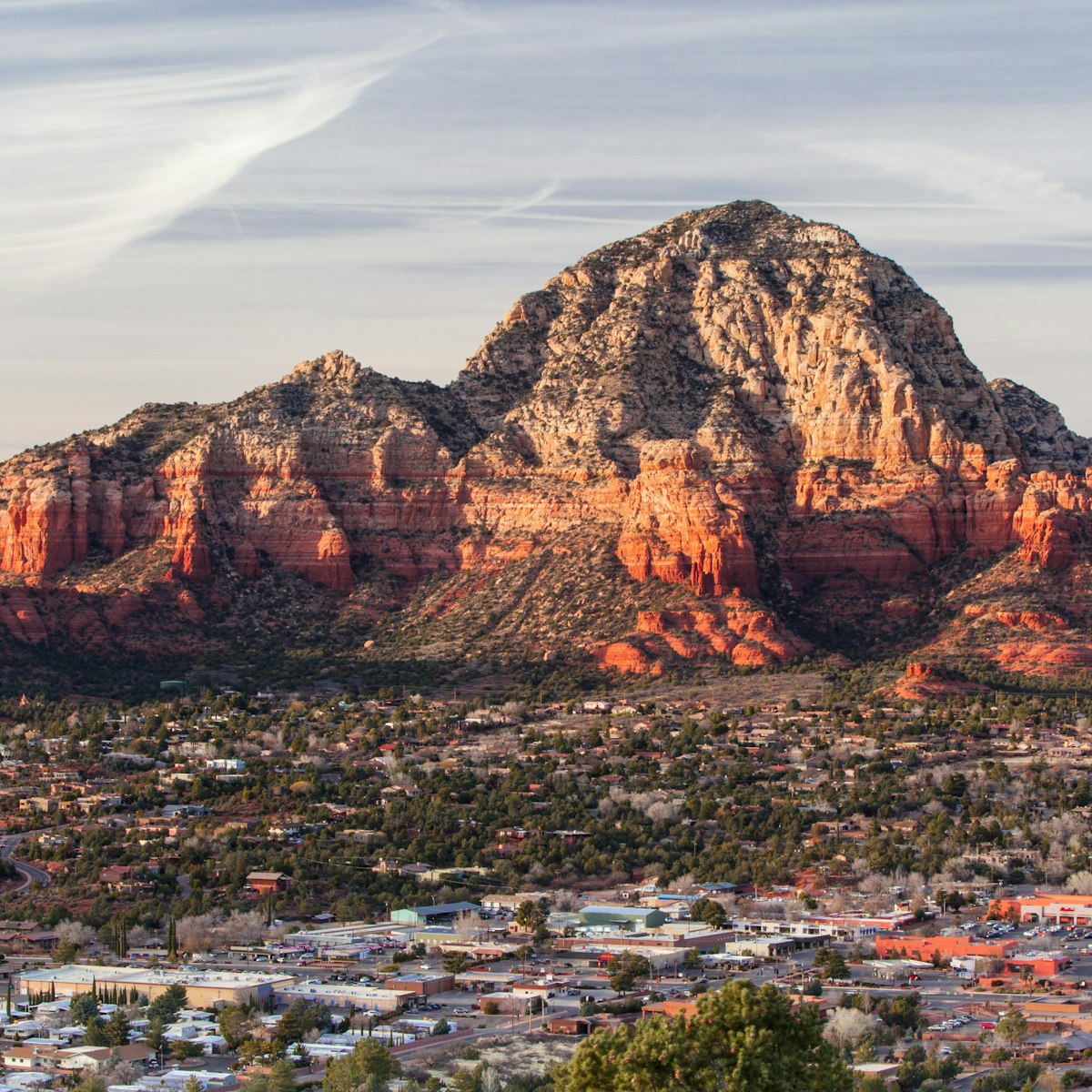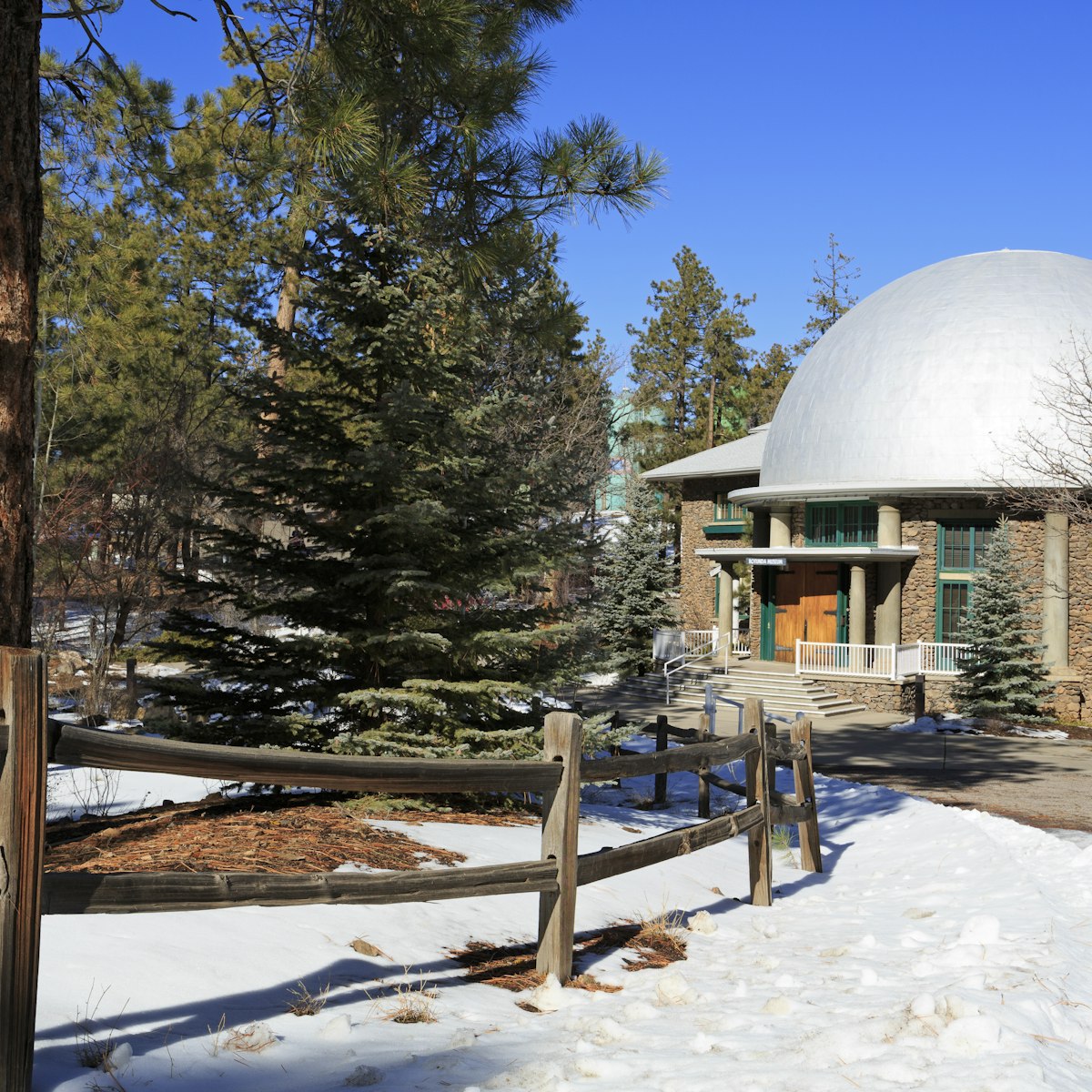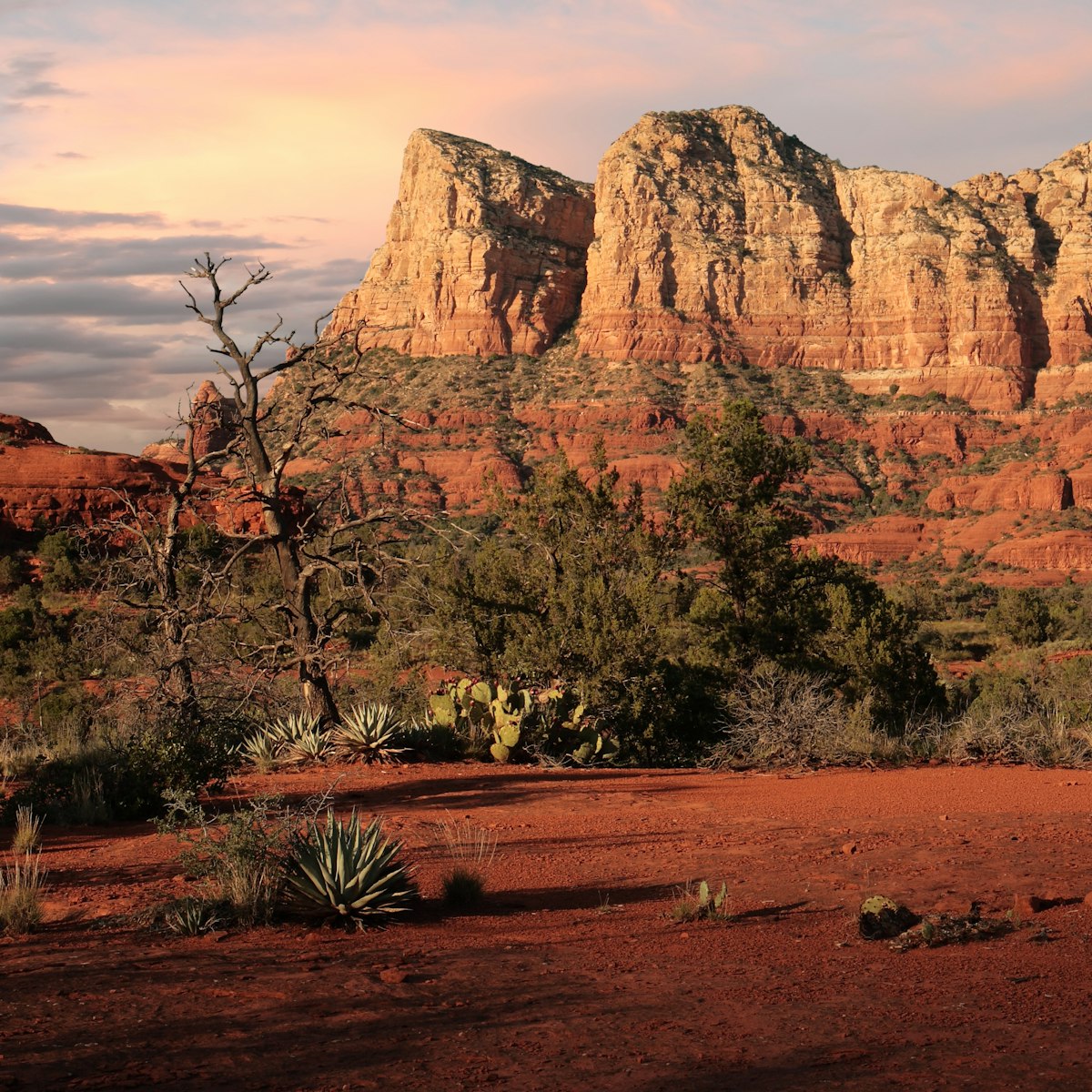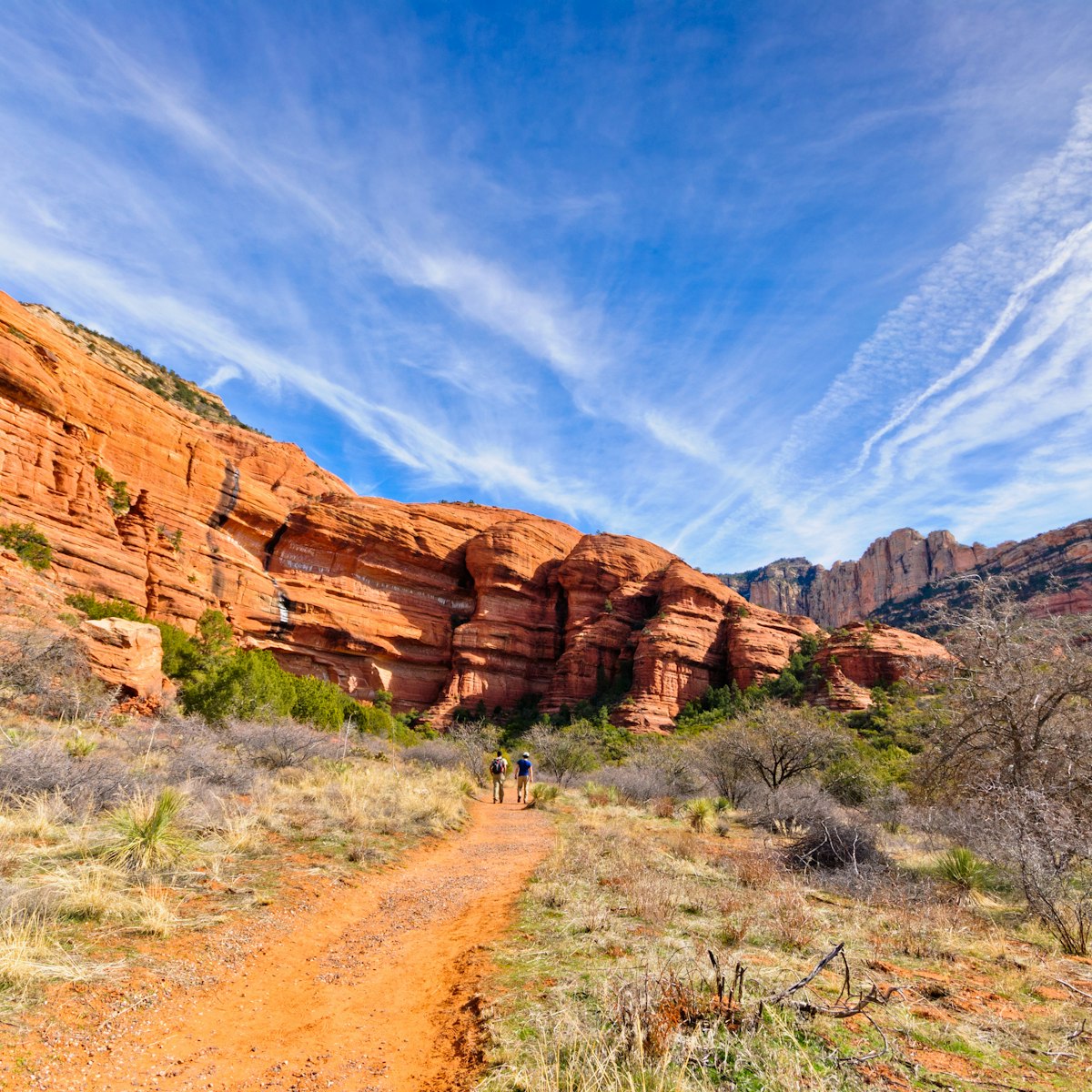If you glance east when driving Sedona’s Red Rock Scenic Byway, a slender structure seemingly welded into the sandstone might catch your eye. Towering 250ft, the Chapel of the Holy Cross is in fact wedged between two walls of ancient red rock. The simplistic structure — not quite a rectangle or rhombus — is supported by a 90ft concrete cross you can see right from the highway.
Completed in 1956, the chapel is backdropped by Twin Buttes and a pair of conical rock formations called Two Nuns. Regardless of whether you’re into religion or architecture, this unorthodox landmark is worth a visit to discover its compelling backstory and take in the cliffside views.
As Catholic churches go, the Chapel of the Holy Cross is austere — inside and out. Bold in its simplicity. Sacred in its geometry. Given its size, the chapel’s pared-back modernist design feels monumental, yet with a reverence to the prehistoric layers of sandstone. Even though the chapel (St. John Vianney Parish) belongs to the Roman Catholic Church, the land it rests on is part of Arizona’s Coconino National Forest.
History
So how did this unusual church come to be? In the 1930s, Marguerite Brunswig Staude visited the Empire State Building in New York City shortly after it was constructed. When gazing up at the iconic edifice, the LA-based sculptor (and future Sedona rancher) is said to have had a vision of a massive cross.
The sign stuck; Staude was hellbent on building a chapel in a modernist style. She teamed up with architect Frank Lloyd Wright Jr., better known as Lloyd Wright, whose famous father coined the term “organic architecture.” Together they embraced the elder Wright’s ethos of design, which connects people and the natural environment in a harmonious way. The pair tried to build a church in Los Angeles, but the archbishop of the diocese deemed the design too modern. Staude and Wright had better luck in Budapest. Their plan for a chapel overlooking the Danube River was approved but then aborted because of the outbreak of the Second World War.
Staude kept the faith. She continued to make art, eventually settling in Sedona with her husband. Since Sedona has earned its status as a center of spirituality, it’s not surprising Staude was inspired to re-up her architectural endeavor in the desert after spotting the specific site in a plane. Wright had moved on, so she sought the services of Richard Hein (project architect) and August K. Strotz (design execution) from the San Francisco architect firm Anshen & Allen. As the slated building site was located on forest land, Staud also enlisted intervention from a higher power: then-Senator Barry Goldwater helped acquire a special permit. The chapel took 18 months to build and cost $300,000. It has earned numerous architectural awards and is listed on the National Register of Historic Places.
See the chapel up close
Set into what’s now called Chapel Rock, the reinforced concrete building angles backward from its roofline. Its modest entrance belies the airy interior, which features floor-to-ceiling windows set back from that colossal cross.
During the daytime, you can see sweeping views of the canyon, and in the evening, the sun’s rays cast a golden glow inside. A refined dignity suffuses the compact chapel, where rows of wooden pews face the statement-making sculpture: Christ nailed to the cross. Made of bronze, the 33ft corpus crucifix is shaped in the form of the Tree of Life, stretching up to the ceiling. It’s rife with spiritual symbolism, from the tree’s double-trunked base and the golden apple to the dozen leaves (representing the 12 apostles) and the crown, which bears three roses and 100 thorns.
Hike near the chapel
The Chapel Trail starts at the end of Chapel Road next to the angled street parking. An easy three-mile round-trip loop threads through the red rocks. Some people believe there’s a vortex site in the area, though Sedona other four energy centers wield the most power. If you’re feeling ambitious, there are plenty more trails to explore. The path connects to Little Horse Trail and beyond. Head left at the fork to get Chicken Point Overlook, then connect to High on the Hog and Twin Butte trails, which go deeper into the backcountry.
Plan your visit
With the exception of Christmas and Easter, the Chapel is open daily from 9am to 5pm. The gift shop is open daily from 9:30am to 4:30pm and closed on Thanksgiving, Christmas, Good Friday and Easter. Religious services such as confession are offered; check the chapel’s website for details as times vary. Mass is held at 8am Monday to Friday and Sunday (a bilingual mass is at 10am) and at 5pm on Saturdays.
Several companies offer tours that make short stops at the Chapel of the Holy Cross, but the easiest way to get there is by car. The church is located between downtown and Oak Creek Village off state route 179. Turn east at the roundabout onto Chapel Road and you’ll find the edifice at the end about a mile’s drive. Visitors can park in one of the 45 roadside spots curving up the street. You can drop off people at the top and turn around, but the curving roadway and ramp to the structure itself is fairly steep. Golf carts are available to assist people with mobility challenges.
A sign near the chapel entry bearing the words, “Peace to All Who Enter” welcomes visitors inside. Even if you’re not religious, keep in mind that this is a place of worship. To maintain the sanctity of the site, when entering the chapel, wear modest clothing, leave your pets behind and avoid loud talking and eating and drinking.
